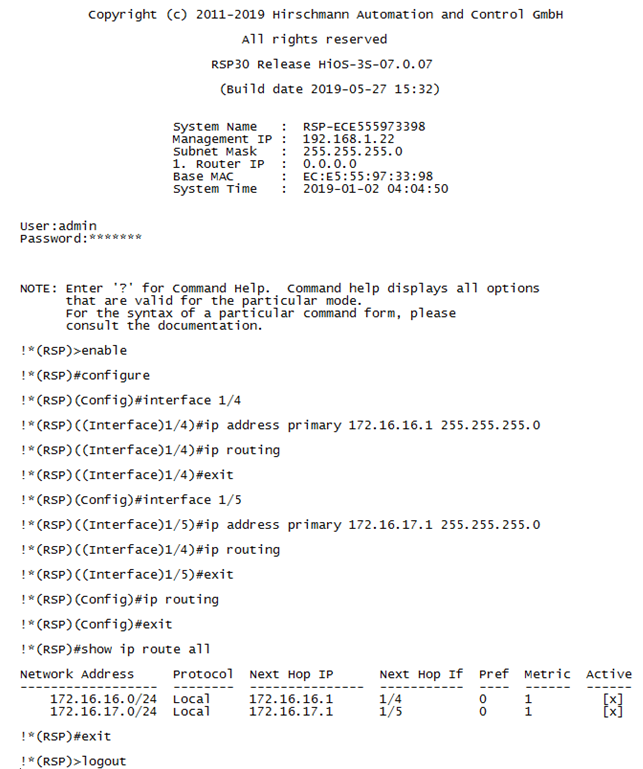This article describes the basic steps required to configure Port-Based (Physical ) Router Interfaces on Hirschmann Platform V Layer 3 switches running the HiOS firmware version 07.0.00 or higher and the new HTMLv5 Graphical User Interface (GUI).
HiOS-3S or 3A & Firmware 07.0.00
With the introduction of the HiOS firmware version 07.0.00, the switch agent’s Graphical User Interface (GUI) has been changed from a Java based interface to a HTML v5 interface.
Configuration Tasks:
The configuration of the routing function usually contains the following steps:
- Draw a Network Plan
Create a picture of your network so that you can clearly see the division into subnetworks and the related distribution of the IP addresses.
This step is very important. Good planning of the subnetworks with the corresponding network masks makes the router configuration much easier.
2. Router Basic Settings
Along with enabling the global routing function, the router basic settings also contain the assignment of IP addresses and network masks to the router interfaces, and then enabling the routing function on that specific interface.
Port-Based (Physical) Router Interfaces:
A port-based router interface is a single physical interface that has at least one subnet connected to it.
If there is no active connection on the port, then the entry from the routing table is removed, because the router transmits exclusively to those ports for which the data transfer is likely to be successful. The entry in the interface configuration table remains.
A port-based router interface does not recognize VLANs, which means that the router rejects tagged packets which it receives on a port-based router interface.
A port-based router interface rejects the non-routable packets.
Note:
When you assign an IP address that is in the same subnetwork as the switch’s management IP address to a router interface, you need to use the configuration wizard to setup the router interface. The device deletes the management IP address when committing the changes. You can then access the device via the IP address of the router interface. You should enable routing globally before you assign an IP address from the subnetwork of the management IP address to a router interface.
The Network Design:
In this article, we will use a RSP switch with Layer 3 Standard features to configure two Port-Based (Physical) Router Interfaces.
We will configure interface Port 1/4 and Port 1/5 as Port-Based (Physical) Router interfaces using IP Address in separate subnets.

The Configuration Steps:
Log into the switch’s GUI with a user ID that has administrative privileges. In the switch’s default configuration, this would be accomplished using the User ID of “ admin “ and a password of “ public “.
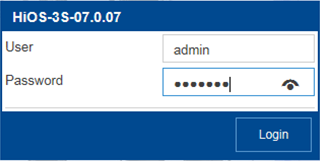
Navigate to the Routing – Global page of the GUI.
Enable the Routing Global operation by selecting the On Operation option radial button and then click the Set button ( ).
).
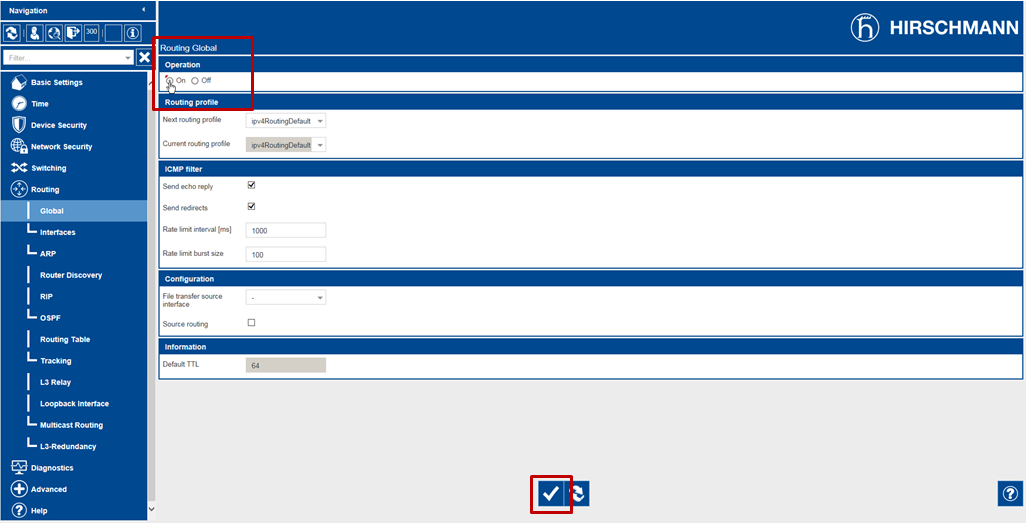
Navigate to the Routing – Interfaces – Configuration page of the GUI.
Enter 172.16.16.1 in the IP Address field for Port 1/4.
Enter 255.255.255.0 in the Netmask field for Port 1/4.
Click the Routing checkbox for Port 1/4.
Click the Set button ( ).
).
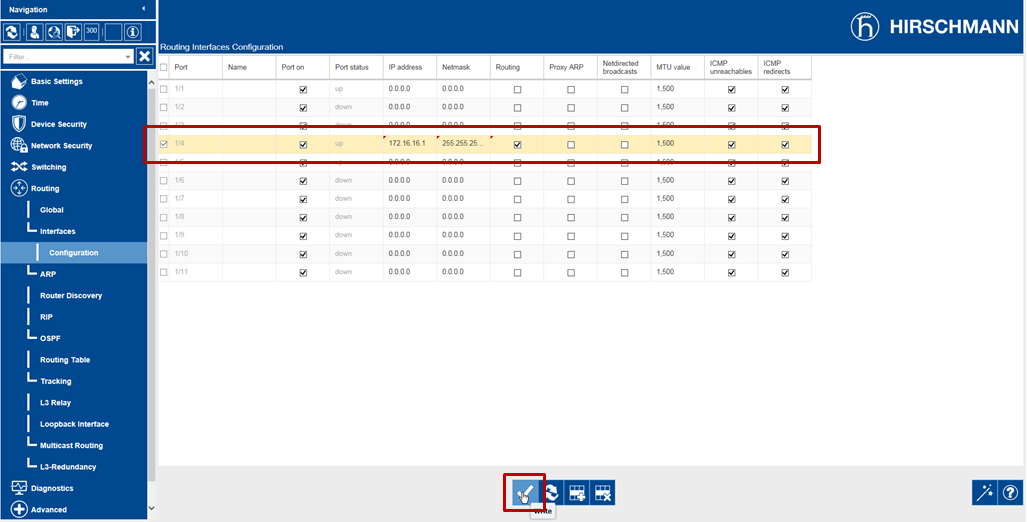
Enter 172.16.17.1 in the IP Address field for Port 1/5.
Enter 255.255.255.0 in the Netmask field for Port 1/5.
Click the Routing checkbox for Port 1/5.
Click the Set button ( ).
).
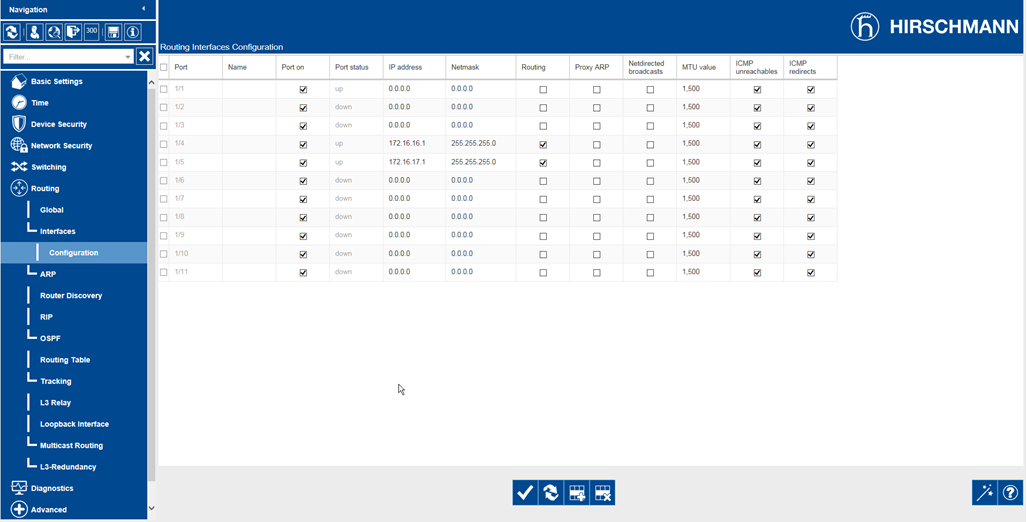
This completes the configuration steps required to configure Port-Based (Physical) Router Interfaces for Ports 1/4 and 1/5.
Verifying the Configuration:
Once we have completed the steps required to configure Ports 1/4 an 1/5 as Port-Based (Physical) Router Interface, we should ensure that the ports are now capable of routing IP Packets.
Remember, if the port configured as a router interface does not have an active Ethernet connection, it can/will not be able to do any routing. So, make sure that you have an active Ethernet connection for both Ports 1/4 and 1/5.
Navigate to the Routing – Routing Table page of the GUI.
Click the Reload button ( ).
).

You should see the two ports listed as having active routes to the IP 172.16.16.0 and 172.16.17.0 networks. Because they are router interfaces configured on this switch, they will be listed as a Local Type.
This switch can now route IP Packets between the two IP networks.
Additional Information
Command Line Interface (CLI) Commands:
The following CLI commands can be used in lieu of the HTMLv5 GUI to configure the switch for Port-Based (Physical) Router Interfaces to meet the same configuration requirements.
